In 1947, Peggy visited again and one year later she was offered to exhibit her collection at the Greek pavilion at the Venice Biennale. The exhibition was her official introduction to the city as an experienced and visionary collector and the confirmation that she had found a home for herself and her art. Among the pieces presented at the Biennale, there was a painting by Jackson Pollock, a piece that signaled the artist’s debut on the European art scene. In 1949, Peggy bought Palazzo Venier dei Leoni, an unfinished building on the Grand Canal by architect Lorenzo Boschetti. The Palazzo became her home as well as the location of the Peggy Guggenheim Collection. As one of the most visited attractions in the city, the Collection is a window into some of the best European and American art of the first half of the twentieth century.
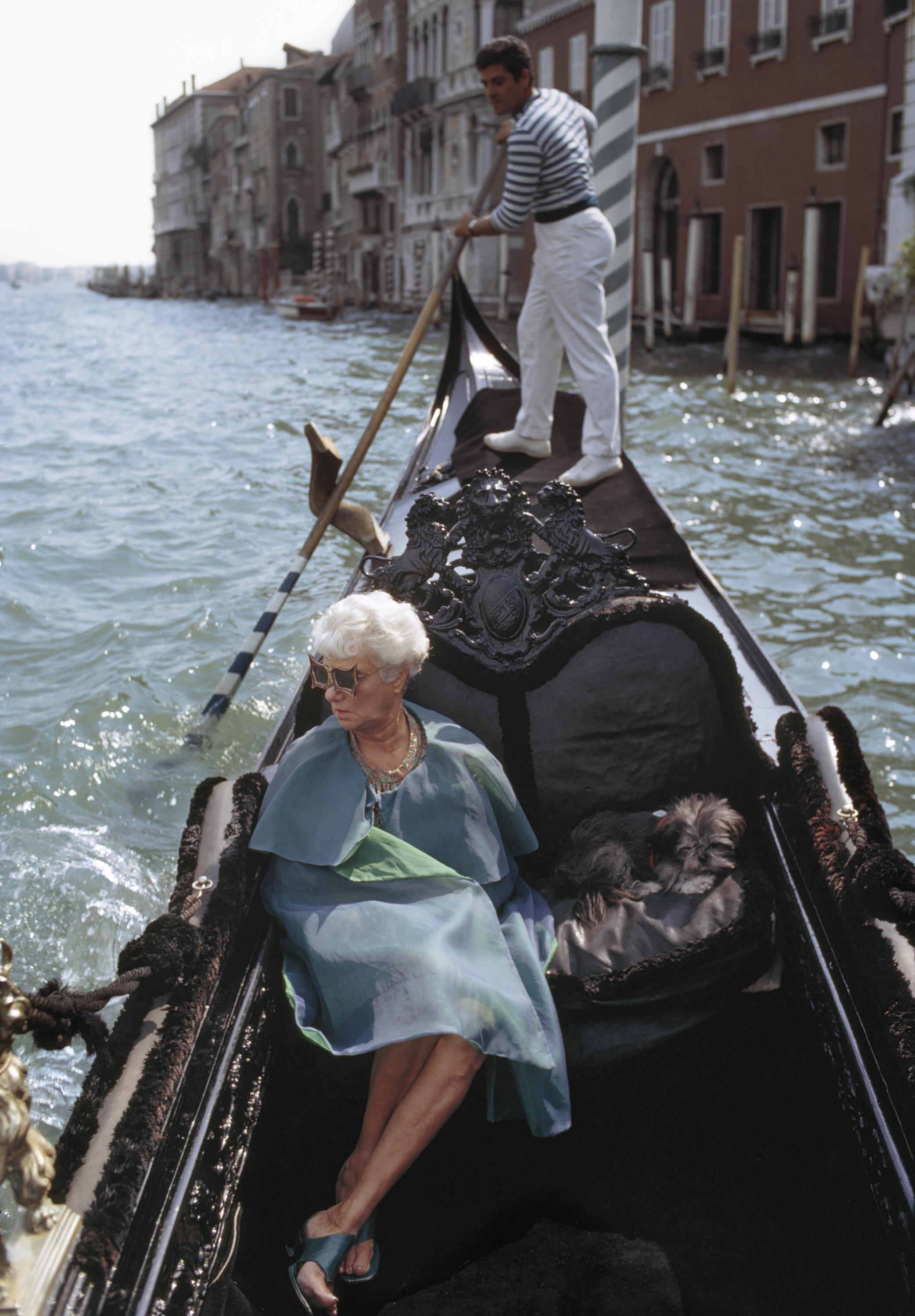
Peggy Guggenheim in her gondola, 1968.
The American art collector and socialite Peggy Guggenheim saw Venice for the first time in 1924. She had traveled there for her honeymoon with her first husband Laurence Veil, an American-French Dada sculptor and writer. At the time, Peggy was only twenty-six—she was born in 1898—and immediately fell in love with the floating city. “I have never been in a city that gave me the same sense of freedom as Venice,” Peggy wrote, “Venice is not only the city of freedom and fantasy but it is the city of pleasure and happiness.”
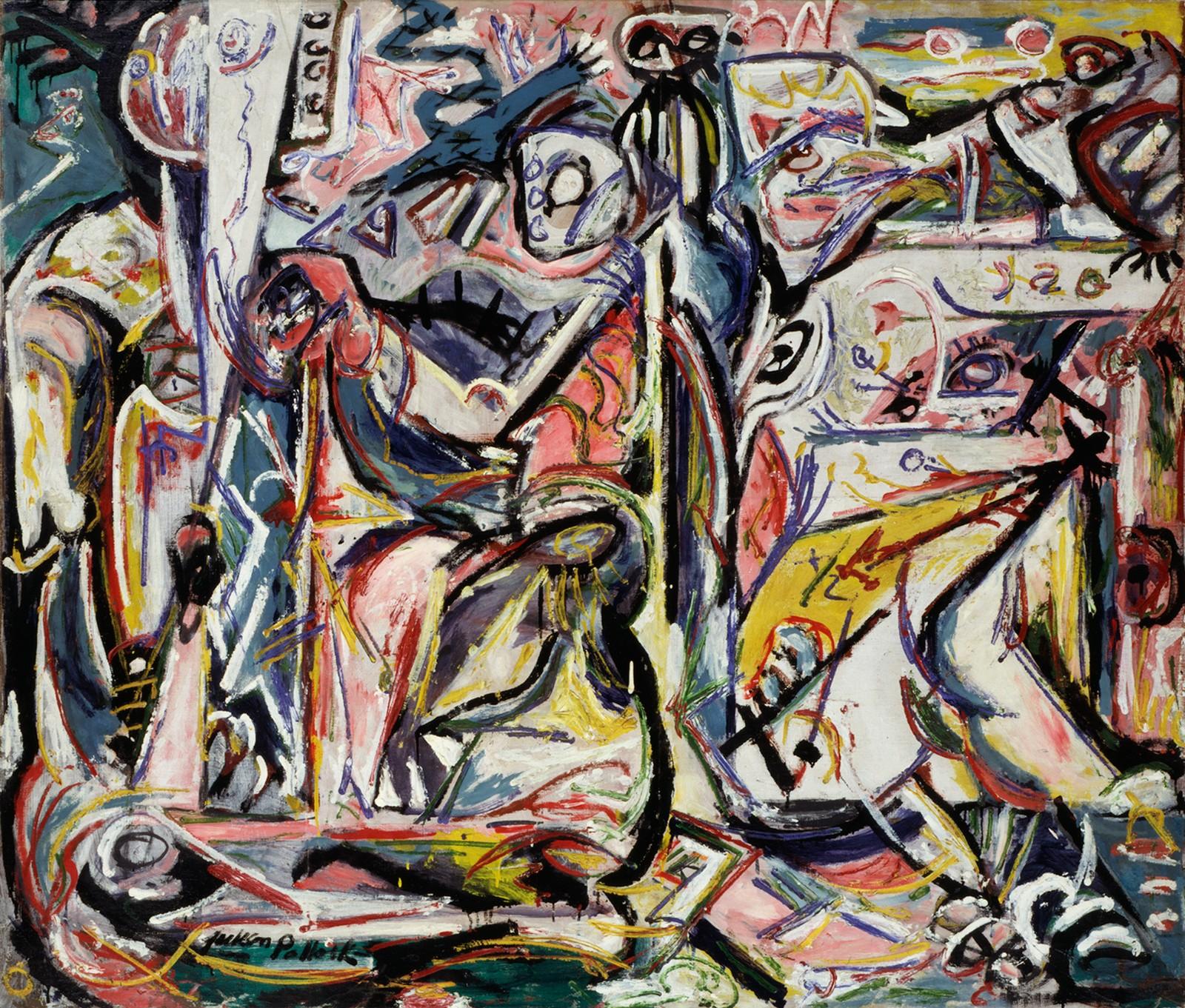
Jackson Pollock, Circumcision, January 1946. Oil on canvas. Collezione Peggy Guggenheim, Venezia.
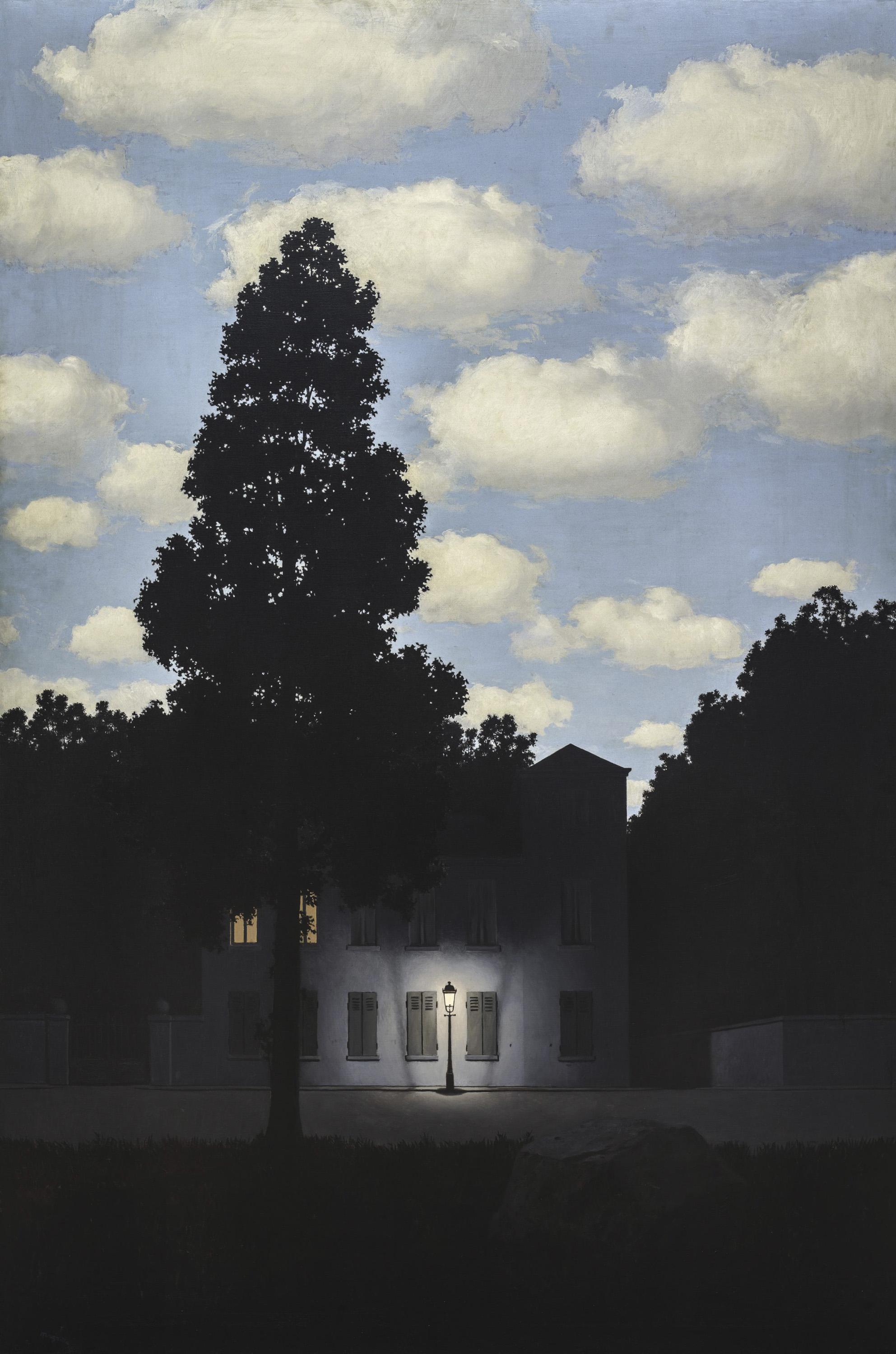
René Magritte, Empire of Light, 1953-54. Oil on canvas. Collezione Peggy Guggenheim, Venezia.
2019 marked the seventieth anniversary of the first exhibition held at Palazzo Venier dei Leoni and the fortieth anniversary of Peggy’s death. To celebrate these occurrences, the Collection organized the exhibition Peggy Guggenheim, The Last Dogaressa. Through more than sixty pieces—paintings, sculptures, and personal scrapbooks—that Peggy collected after 1948, visitors have the rare opportunity to see masterpieces such as L’Empire des Lumières by René Magritte, Study for Chimpanzee by Francis Bacon, and Boîte-en-Valise created in 1941 by Marcel Duchamp specifically for her.
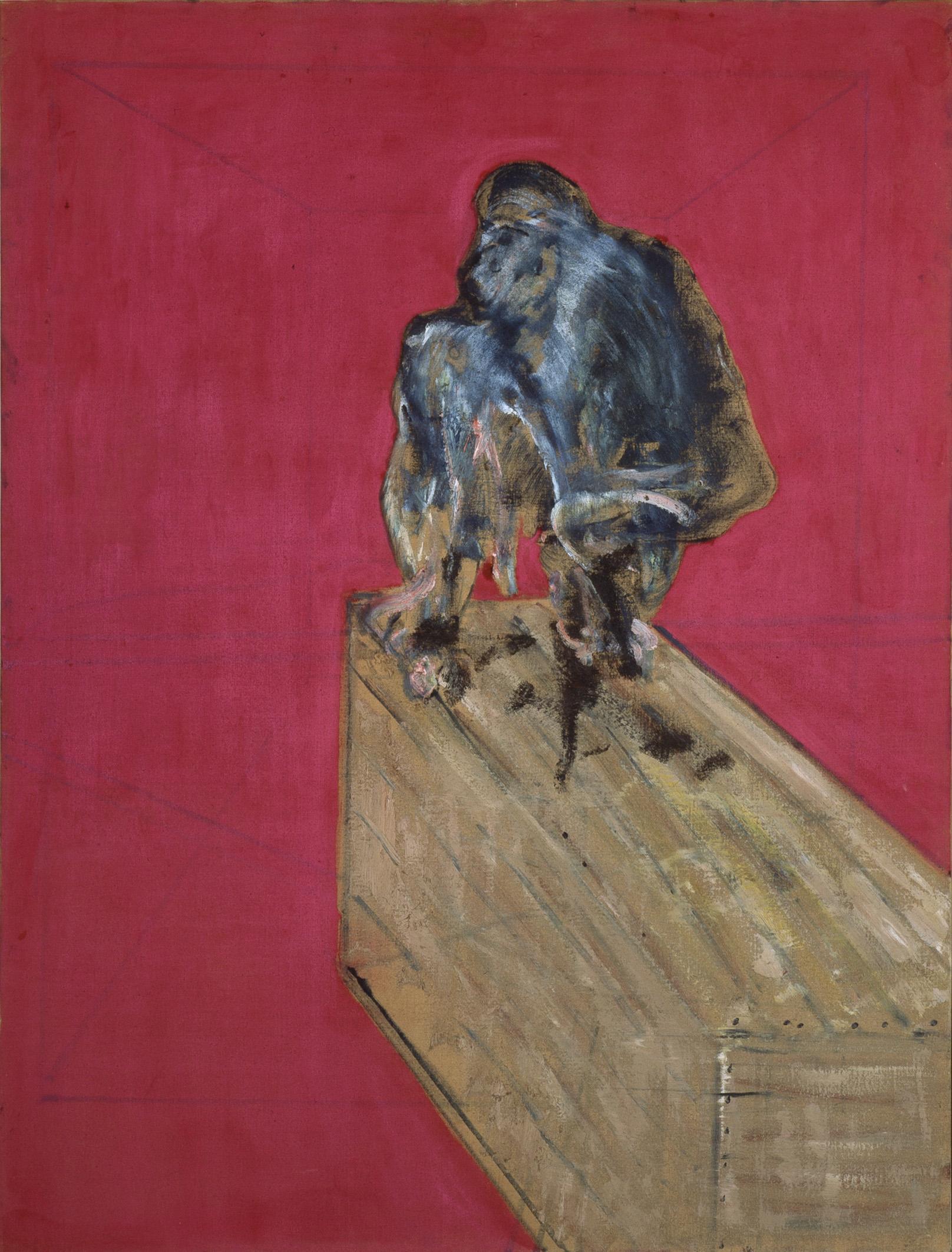
Francis Bacon, Study for Chimpanzee, March 1957. Oil and pastel on canvas. Collezione Peggy Guggenheim, Venezia.
The Last Dogaressa opened with the pieces presented at the Greek pavilion in 1948, a clear celebration of Peggy’s first Venetian appearance. This exhibition also focused on Peggy’s extraordinary ability to recognize the talents of artists like Mark Rothko, Clyfford Still, and Robert Motherwell. Among the artists of the abstract expressionist period, we also find Grace Hartigan and Irene Rice Pereira, a sign that Peggy strongly believed in the promotion and recognition of women artists.
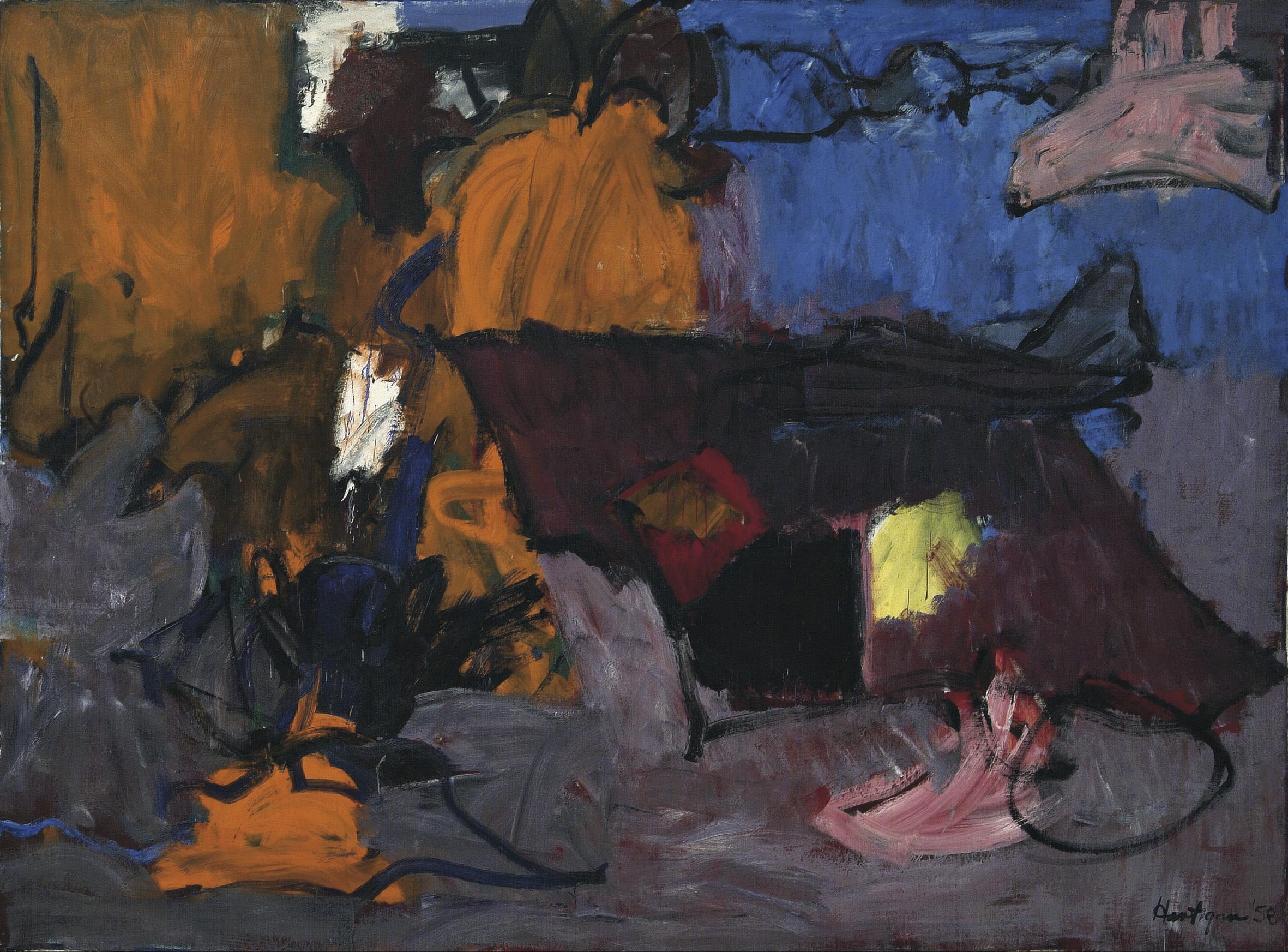
Grace Hartigan, Ireland, 1958. Oil on canvas. Collezione Peggy Guggenheim, Venezia.
Yet Peggy did not only promote international artists, she was also interested in meeting local ones. One day at a restaurant in San Marco Square, she befriended Emilio Vedova and Giuseppe Santomaso, two of the most important modern Italian painters. Although she could speak Italian, Peggy found it initially hard to communicate with the two artists in Venetian, the local dialect that she eventually mastered. “The attention she gave the local talent was key,” says Gražina Subelytė, one of the curators at the Collection, “she was one of these artists’ earliest supporters.”
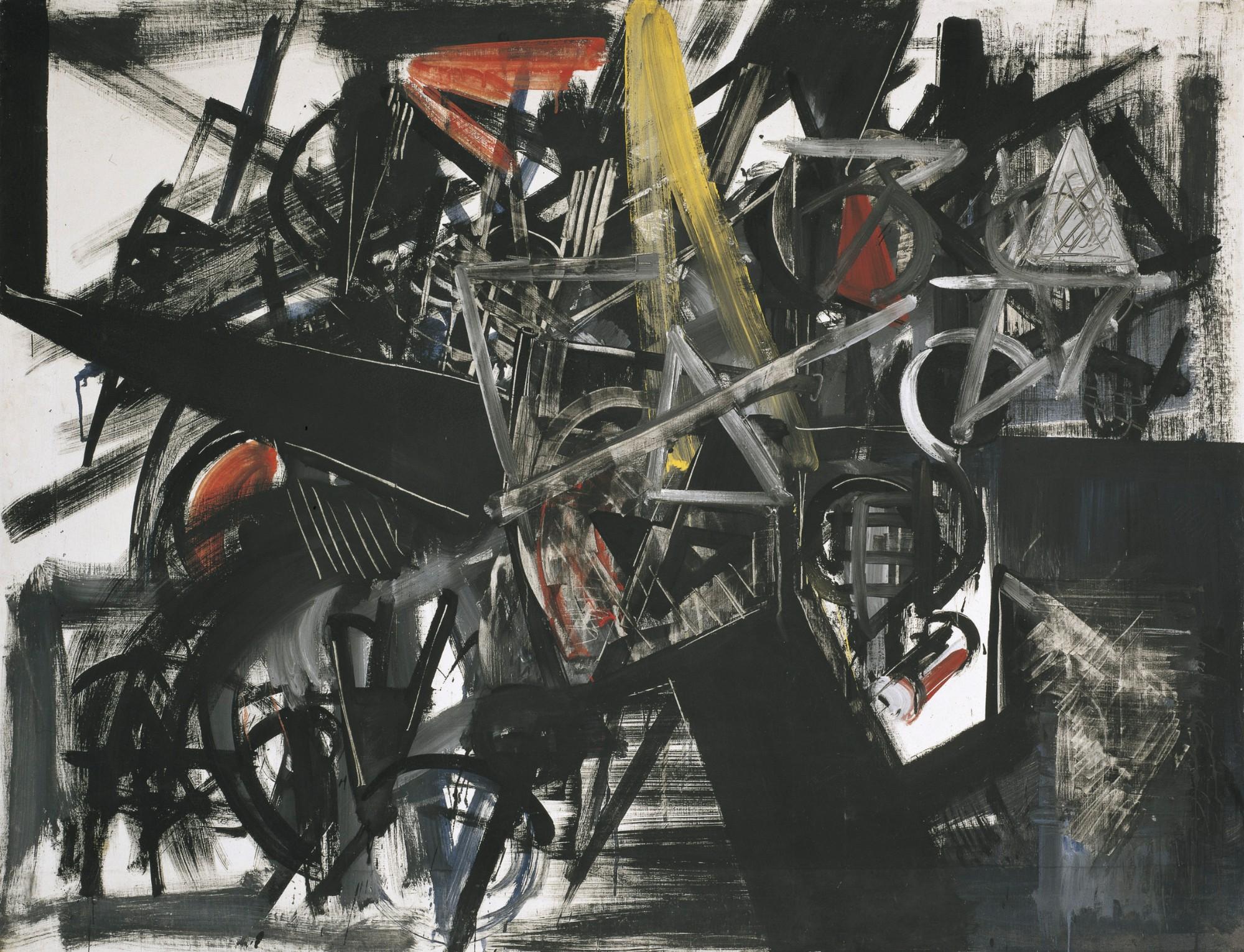
Emilio Vedova, Image of Time (Barrier), 1951. Egg tempera on canvas. Collezione Peggy Guggenheim, Venezia.
From her writings, it is evident that Peggy loved Venice. “If anything can rival Venice in its beauty, it must be its reflection at sunset in the Grand Canal” she noted. To this day, Venice reciprocates her love. It is still common to hear Venetians and students say “Let’s go to Peggy’s” as if they were planning a visit to an old friend who lives just across the bridge, that American lady with fascinating stories and a house full of art on the Grand Canal.

Peggy Guggenheim in the garden of Palazzo Venier dei Leoni, Venice, 1970s. Next to her, Germaine Richier's Tauromachy, 1953.



























